Masai Mara National Reserve - Ultimate Kenya Safari Experience
Situated in southwestern Kenya along the Great Rift Valley, the Masai Mara National Reserve is celebrated as one of Africa’s most iconic wildlife destinations. Spanning approximately 1,510 square kilometers, this renowned reserve is a sanctuary for diverse ecosystems. The Masai Mara boasts endless plains, breathtaking vistas, and abundant wildlife, teeming with life and offering awe-inspiring natural beauty. Renowned for its significant population of big cats and the awe-inspiring Great Wildebeest Migration, the reserve captivates the hearts of adventurers and nature enthusiasts alike.
Honoring both the Maasai people, who have long inhabited these expansive plains, and the Mara River that gracefully meanders through the terrain, the reserve guarantees an unforgettable safari experience. Here, visitors can immerse themselves in a vibrant display of life as the rhythm of the African savannah unfolds before their eyes.
Whether you’re witnessing the powerful stampede of wildebeest during the great migration or coming face-to-face with the majestic presence of lions and elephants, the Masai Mara offers a deep connection to nature. It invites you to explore its wonders and embrace the spirit of adventure in an environment that feels both timeless and exhilarating.
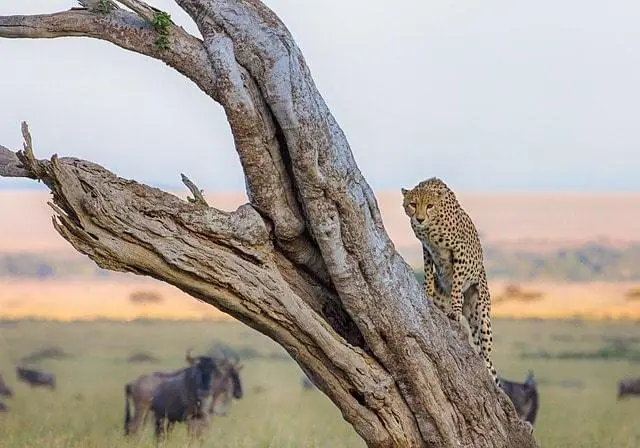
Wildlife in Masai Mara Reserve
The Masai Mara National Reserve is renowned for its abundant wildlife, including the Big Five—lion, elephant, buffalo, leopard, and rhino—as well as wildebeest, zebras, giraffes, and numerous bird species. This impressive diversity makes the reserve a paradise for wildlife enthusiasts and photographers eager to capture the essence of the African savannah.
Imagine standing on the vast plains, watching herds of elephants move gracefully across the horizon or spotting a leopard resting in a tree. It’s also one of the few places where you can observe the rare black rhino in its natural habitat—a truly once-in-a-lifetime experience.
For bird enthusiasts, the Masai Mara Reserve is nothing short of a sanctuary. With over 450 bird species making their home here—from the vibrant lilac-breasted roller to the commanding martial eagle—each visit promises a new discovery. The varied mix of riverine forests, open savannahs, and acacia woodlands creates an ideal environment for these feathered wonders, making every moment an opportunity to observe nature’s intricacies up close.
Yet, perhaps the most moving spectacle is the annual wildebeest migration. Visualize millions of wildebeest, zebras, and other grazers embarking on an epic journey across the Mara River, risking life and limb in search of greener pastures. This event is a testament to nature’s raw power, survival instincts, and the delicate balance that governs the wild. Witnessing this natural phenomenon leaves an indelible mark on every traveler’s heart.
In addition to these iconic species, the reserve hosts an array of fascinating animals such as hyenas, jackals, and a variety of antelope species including the nimble impala and the striking topi. The region’s rich biodiversity is maintained through sustained conservation efforts and a deep, symbiotic relationship with the local Maasai communities. This harmonious balance ensures that the Masai Mara remains a magical wildlife sanctuary for future generations.
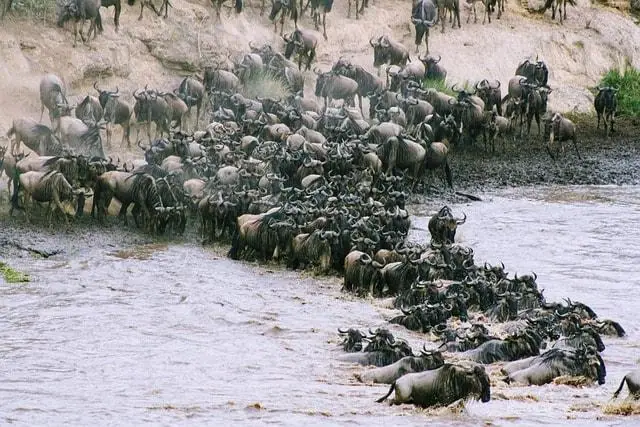
Main Attractions in Masai Mara National Reserve
One of the major highlights of the Masai Mara Reserve is the spectacular Great Wildebeest Migration. Imagine millions of wildebeest and zebras making their historic journey from the Serengeti to the Mara—an event that many regard as one of the “Seven New Wonders of the World.” This awe-inspiring migration showcases nature in its rawest form, where survival, determination, and instinct come together in a grand, cyclical display of life.
As these vast herds seek fresh grazing grounds, they must brave the formidable challenge of crossing the Mara River. This river, teeming with predators and enormous crocodiles, serves as both a barrier and a lifeline. Observing these animals navigate such perilous waters is a powerful reminder of nature’s relentless cycle and the struggle for survival in the wild.
But the migration is only part of the allure. The reserve also features the Mara Triangle—a quieter, less crowded section known for its abundant wildlife and tranquil beauty. This area is ideal for those who desire a more intimate safari experience. Here, the expansive plains and lush riverine forests form a natural sanctuary for the Big Five and other remarkable creatures, making each visit a unique and personal adventure.
For enthusiasts of big cats, the Masai Mara is unmatched. The reserve is famed for its frequent sightings of lions, leopards, and cheetahs during game drives. The open landscapes and plentiful prey create perfect conditions for these predators to thrive, offering visitors a series of thrilling wildlife encounters that remain etched in memory.
In addition to its unparalleled wildlife, the Masai Mara is steeped in rich cultural heritage. The vibrant traditions and deep-rooted connection of the Maasai people to the land add an enriching layer to any safari experience. Engaging with the Maasai learning about their customs, dances, and ancient rituals provides a rare glimpse into a way of life that has evolved in tandem with the wild landscapes for centuries.
Climate in Masai Mara
The Masai Mara benefits from a mild, temperate climate that enhances the safari experience throughout the year. With temperatures typically ranging between 15°C and 30°C, the reserve is a comfortable destination for wildlife exploration regardless of the season. Two distinct seasons—dry and wet—shape the visitor experience and the behavior of the local fauna.
During the dry season, from July to October, conditions are ideal for safari adventures. This is when the Great Migration takes place, as millions of wildebeest, zebras, and other herbivores brave the Mara River. The scarcity of water during these months means that animals converge around the remaining water sources, providing excellent opportunities for wildlife viewing and photography.
Conversely, the wet season, which runs from November to June, transforms the landscape into a lush, green wonderland. Although navigating some areas may be more challenging due to rain and occasional mud, the quieter atmosphere and dramatic scenery make it a perfect time for birdwatching and for witnessing the birth of new life among the wildlife. Migratory bird species add a burst of color and sound, enriching the overall experience with their presence.
No matter when you visit, the Masai Mara’s climate is a vital part of its allure. Each season presents its own unique charm, ensuring that every safari experience is filled with breathtaking moments and a deeper understanding of nature’s rhythms.
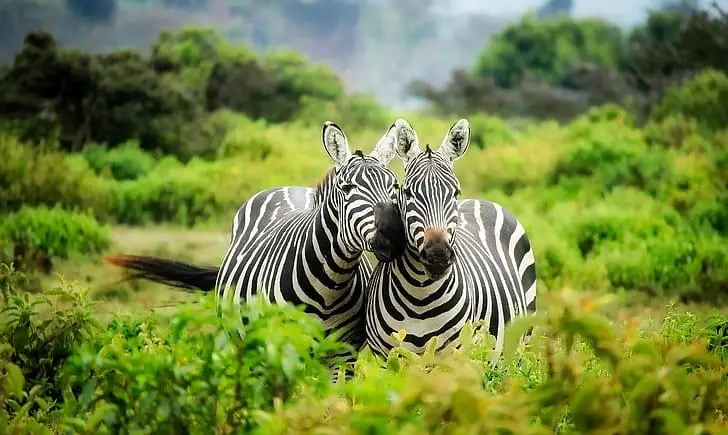
Conservancies within the Masai Mara Region
The area surrounding Masai Mara National Reserve includes several conservancies that offer exclusive safari experiences while supporting wildlife conservation and community development. These conservancies enhance the safari experience by providing a secluded connection with nature and contributing to environmental preservation and local Maasai welfare. Visiting them allows travelers to enjoy incredible wildlife and actively support conservation efforts, ensuring the Masai Mara continues to thrive as a sanctuary for both animals and people.
Mara North Conservancy: Spanning approximately 320 square kilometers, this private wilderness area is an integral part of the larger Mara-Serengeti ecosystem. It is renowned for its sustainable tourism initiatives and conservation efforts. Visitors here can enjoy game drives and walking safaris that provide intimate encounters with the Big Five. The conservancy’s close collaboration with local Maasai communities ensures that tourism benefits both wildlife and residents, fostering a model of community-based conservation.
Olare Motorogi Conservancy: Covering about 133 square kilometers, this conservancy, located adjacent to the national reserve, boasts diverse landscapes—from vast open plains to serene riverine forests. It is celebrated for its high density of big cats, including lions, leopards, and cheetahs. With limited vehicle access, Olare Motorogi offers an exclusive and tranquil safari experience, allowing visitors to appreciate the raw beauty of the African savannah without the crowds.
Naboisho Conservancy: As a pioneering conservation initiative, Naboisho spans over 200 square kilometers and blends wildlife preservation with community empowerment. It offers unique safari experiences such as night game drives and guided walking safaris. In addition to its wildlife attractions, Naboisho provides visitors with the opportunity to interact with local Maasai communities, gaining insights into their cultural heritage and sustainable practices.
Ol Kinyei Conservancy: Despite covering a modest area of approximately 65 square kilometers, Ol Kinyei is a true biodiversity gem. Known for its excellent wildlife encounters—particularly with lions and other big cats—it offers guided nature walks in a peaceful setting. The conservancy’s commitment to conservation and education makes it a favorite among those seeking an authentic and intimate safari experience.
Lemek Conservancy: Situated to the north of the Masai Mara, Lemek offers a quieter, more secluded safari experience. Its varied terrain supports a wide range of wildlife, including elephants, buffalo, zebras, and a variety of antelope species. With a strong emphasis on sustainable tourism, Lemek Conservancy provides visitors with a unique opportunity to explore Kenya’s untamed beauty while contributing to local conservation and community development initiatives.
Best Time to Visit Masai Mara National Reserve
The best time to visit the Masai Mara Reserve is from late June to early October, coinciding with the peak of the Great Wildebeest Migration. Millions of wildebeest and zebras travel from Tanzania’s Serengeti National Park to the Masai Mara in search of pasture, creating stunning river crossings views with danger from crocodiles.
The Mara Triangle offers a more exclusive safari experience for the great migration, with sweeping plains, riverine forests, and abundant wildlife, including the Big Five. Visitors can enjoy guided game drives, walking safaris, and cultural exchanges with the Maasai amidst breathtaking scenery.
The Maasai Mara National Reserve (masai mara national reserve – Masaai Mara National Reserve) is one of Kenya’s most renowned destinations for tourists and is located in the south-western part of Kenya. The reserve was named for its ancestral people Maasai. The people describe the region as Mara, which means circled trees and vegetation. Masai Mara National Reserve was established in 1961 in an animal refuge containing only 530 square kilometres of the Mara Triangle currently.
For a quieter experience, consider visiting at the beginning or end of the peak season, or during the wet season from March to May, when the landscape becomes lush and wildlife sightings are more scattered yet rewarding.
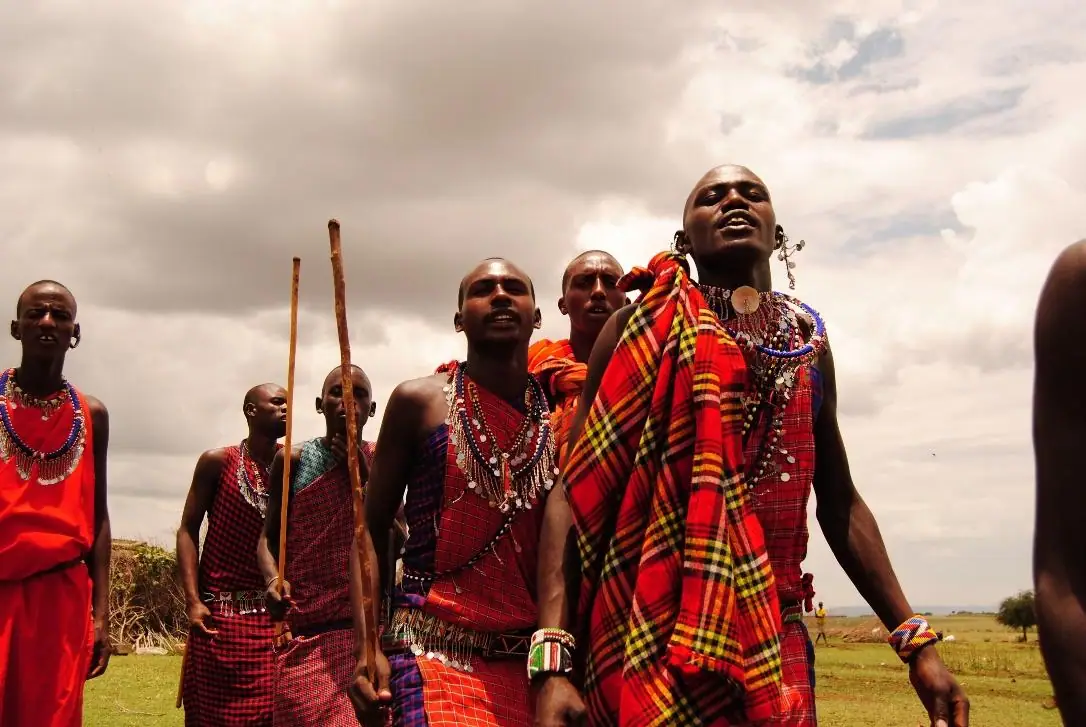
Experience Masai Mara
A visit to the Masai Mara National Reserve promises a diverse range of activities to suit every kind of adventurer. Whether your goal is to see the Big Five, capture breathtaking photographs, or immerse yourself in the local culture, each of these activities is designed to create lasting memories and a deeper appreciation for the natural and cultural wonders of the Masai Mara.
- Game Drives:
Venture into the heart of the reserve on guided game drives that reveal the intricate dynamics of the African savannah. Early morning and late afternoon drives are particularly magical, as the savannah comes alive with the rustle of wildlife and the golden hues of dawn and dusk. - Hot Air Balloon Safaris:
For a unique and elevated perspective, take a hot air balloon ride at sunrise. As you drift peacefully above the vast landscape, you’ll gain an unparalleled view of the sprawling plains, winding Mara River, and the wildlife that roams beneath—a truly unforgettable experience. - Walking Safaris:
Step away from the vehicle and immerse yourself in the environment on guided walking safaris. These treks allow you to observe the smaller details of the ecosystem—the flora, insects, and even tracks left behind by passing wildlife—providing a deep connection with the land. - Cultural Visits:
Enhance your journey by visiting a Maasai village. Here, you can learn firsthand about the traditions, customs, and daily life of the Maasai people. This enriching experience deepens your understanding of the region’s history and the symbiotic relationship between the local communities and their environment. - Bird Watching:
With an astonishing variety of over 450 bird species, the Masai Mara is a birdwatcher’s paradise. Whether you’re spotting the colorful lilac-breasted roller or the majestic martial eagle, each moment spent with your binoculars in hand is a discovery waiting to happen.
Masai Mara Highlights
- The Great Wildebeest Migration: One of nature’s most spectacular events, the annual movement of millions of wildebeest, zebras, and other herbivores is a sight that few experiences can rival. Often hailed as one of the “Seven New Wonders of the World,” this migration demonstrates the extraordinary resilience of these animals as they cross the crocodile-filled Mara River in search of greener pastures.
- Big Cats Galore: The reserve is famed for its dense population of big cats. Lions, leopards, and cheetahs roam freely in their natural habitat, providing unforgettable encounters during both vehicle-based and walking safaris. Their presence is a constant reminder of the wild beauty that defines the African savannah.
- Scenic Landscapes: The breathtaking scenery of the Masai Mara Reserve is characterized by its rolling plains, scattered acacia woodlands, and pristine riverine forests. These picturesque vistas provide the perfect backdrop for photography and nature appreciation, capturing the true essence of East Africa’s natural splendor.
- Mara River: Serving as the lifeline of the Masai Mara National Reserve, the Mara River is vital for sustaining its abundant wildlife. Its dynamic flow not only supports the animals that depend on it but also hosts dramatic migration crossings, where the interplay of water, wildlife, and predators creates a mesmerizing natural spectacle.
- Cultural Richness: Beyond the wildlife and landscapes, the cultural heritage of the Maasai people adds a unique dimension to the Masai Mara experience. Their centuries-old traditions and close bond with the land enrich every encounter, making the reserve not just a destination for wildlife, but a living cultural tapestry.
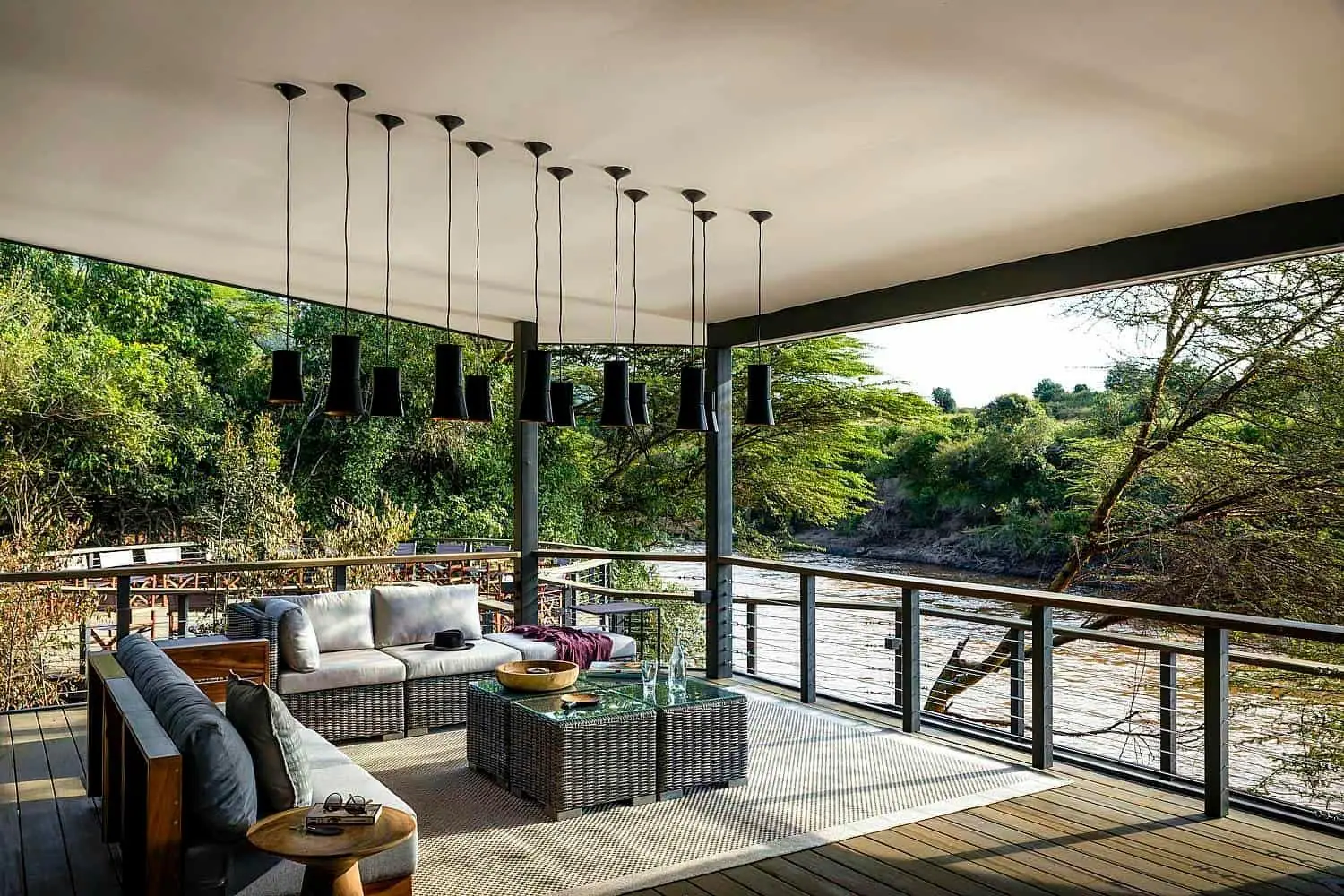
Additional Insights and Travel Tips
Beyond the wildlife and landscapes, planning a visit to the Masai Mara offers numerous practical considerations that can enhance your overall experience. Many visitors find that spending extra time in the region not only deepens their connection with nature but also offers an opportunity to engage with local communities. Here are a few insights and tips for making the most of your safari adventure:
Accommodation and Lodging Options:
The Masai Mara Reserve offers a diverse array of accommodations, ranging from luxurious lodges and tented camps to more rustic camping experiences. Notable options include the Bateleur Camp, Kichwa Tembo Tented Camp, Sanctuary Olonana Camp, Mara Siria Camp, Angama Mara, Kilima Camp, and Mara Engai Wilderness Lodge, among others.
Many lodges provide eco-friendly amenities and organize daily game drives, ensuring that your stay is both comfortable and connected to nature. To secure the best lodging that matches your preferences and budget, it is advisable to book well in advance, especially during the peak migration season.
Local Cuisine and Cultural Experiences:
A safari is not just about the wildlife—it’s also about immersing yourself in the local culture. Try traditional Kenyan dishes, sample local beverages, and if possible, participate in cultural performances organized by the Maasai community. Such interactions offer a glimpse into the daily life and traditions of the people who have coexisted with the land and its wildlife for generations.
Photography and Wildlife Observation:
Whether you are a professional photographer or a casual observer, the Masai Mara provides countless opportunities to capture stunning moments. Early morning and late afternoon game drives are particularly rewarding, as the light is soft and the animals are most active. Bring a good pair of binoculars and a camera with a telephoto lens to make the most of your time on the plains.
Sustainable Travel Practices:
Safari in the Masai Mara is heavily centered on conservation and community support. Consider choosing tour operators and accommodations that emphasize sustainability. This not only enriches your experience but also helps ensure that the natural beauty and cultural heritage of the region are preserved for future visitors.
In summary, the Masai Mara National Reserve offers an unparalleled safari experience where visitors can fully immerse themselves in the splendor of the African savannah. From the dramatic spectacle of the Great Migration to intimate wildlife encounters and profound cultural exchanges, every moment while on safari in Masai Mara is infused with wonder and discovery.
Finally, the Masai Mara National Reserve invites you to experience the magic and majesty of one of Africa’s most iconic wildlife destinations. With Seremara Safaris, explore Kenya’s untouched lands, delve into its rich cultural heritage, and embark on adventures that make every Kenya Safari a truly unforgettable journey.
- Photography and Wildlife Observation:
Whether you are a professional photographer or a casual observer, the Masai Mara provides countless opportunities to capture stunning moments. Early morning and late afternoon game drives are particularly rewarding, as the light is soft and the animals are most active. Bring a good pair of binoculars and a camera with a telephoto lens to make the most of your time on the plains. - Sustainable Travel Practices:
Safari in the Masai Mara is heavily centered on conservation and community support. Consider choosing tour operators and accommodations that emphasize sustainability. This not only enriches your experience but also helps ensure that the natural beauty and cultural heritage of the region are preserved for future visitors.
In summary, the Masai Mara National Reserve offers an unparalleled safari experience where visitors can fully immerse themselves in the splendor of the African savannah. From the dramatic spectacle of the Great Migration to intimate wildlife encounters and profound cultural exchanges, every moment while on safari in Masai Mara is infused with wonder and discovery.
Finally, the Masai Mara National Reserve invites you to experience the magic and majesty of one of Africa’s most iconic wildlife destinations. With Seremara Safaris, explore Kenya’s untouched lands, delve into its rich cultural heritage, and embark on adventures that make every Kenya Safari a truly unforgettable journey.
What Our Clients Say About Kenya Holiday Safaris
Posted onVerified An incredible trip with Seremara Safaris! We recently returned from an incredible trip organized by Benson at Seremara Safaris, and we couldn’t be happier with the experience. Like many, we were initially a bit nervous booking online, but Benson was absolutely amazing from start to finish. Everything was flawlessly arranged, and we never had to worry about a thing.Benson coordinated our entire journey - from airport transfers in Nairobi, hotel stays, domestic flights to the Masai Mara and Diani Beach, and all accommodations and transfers in between. His attention to detail was impeccable, and his recommendations for places to stay were spot-on.We spent two nights at Basecamp Masai Mara and one night at Eagle View. We had a great time at Basecamp and wouldn’t change that part, but we absolutely loved Eagle View and would definitely spend two nights there next time as well! Whilst on safari we saw a huge number of animals, including four of the big 5. We had great guides in both camps, but worth a special mention to Safari Steve who was amazing! He was so informative and very passionate, which was infectious. A particularly thoughtful touch was Benson coming to meet us personally at the airports twice during our trip just to check in and make sure everything was going well. That level of care really stood out.We've been enthusiastically recommending Seremara Safaris to all our friends since coming home, and we would happily book with Benson again. Thank you for making our trip so special!Posted onVerified amazing service & reasonable price we lived amazing experience with amazing guides , very kind and helpful everything was exactly like what they promised i liked their honesty and flexibility , i get a reasonable price ,the service and the experience absolutely worth itPosted onVerified Excellent organization of the whole trip to Samburu. Excellent planning and smooth operation of our tour to Samburu. Benson arranged the trip complete with flights, accommodation, vehicle and our very own very knowledgable guide Jackson. One of the best wildlife trips we’ve been on from beginning to end!Posted onVerified Trip of a lifetime Seremara Safaris provided my daughters and me with the trip of a lifetime. Benson Ndunyu, tours manager, designed a safari specifically to meet our needs and desires. He was prompt with responses, professional, personable and added touches that went above and beyond. Our guide Jack was knowledgeable, outgoing, intelligent, and funny. Our safari was affordable and intimate. It was just the three of us with Jack in the vehicle which enabled us to determine how long to watch certain animals, which animals to look for and ensured that we could always see the animals easily. We did indeed see every animal we hoped to see and learned about their behaviors and interconnectedness. Driving rather than flying between parks gave us the opportunity to see different parts of Kenya and to learn from Jack about the various tribes and cultures we passed. I highly recommend Seremara Safaris for an experience you will never forget and always cherish.Posted onVerified Amazing time! I discovered Benson through this Safari Bookings site, but I also got 2 quotes from other travel agents that were recommended by friends who lived in Kenya. We wanted to go to Diani Beach after, and Benson was the only one who worked with me to find a direct flight to the coast and also negotiated with the airline to get a better price. All the other agents just said I had to fly back to Wilson Airport first, and weren't very flexible nor helpful. Benson also helped to book us the SGR train back from Mombasa to Nairobi, as online bookings require mPesa which I don't have as a non-Kenyan.The other tour operators just offered one place to stay all 3 nights, but Seremara had the option of 2 nights in the Mara and 1 night in Naibosho. To be honest, I had no idea what the difference was at the time, so I never would have considered this on my own, but I'm glad that Benson's tour package offered this. It really is great to experience time in Maasai Mara and a night in one of the adjoining private conservatories, because you get different experiences.Overall, my husband and I had an amazing time and we would highly recommend you travel with Seremara!Posted onVerified Excellent Kenya Safari Before visiting Kenya we had high expectations of what an African Safari holiday should be like. These expectations were exceeded because the personalised service was excellent and very aligned with our needs. The travel was comfortable , the game viewing spectacular and hotels service was world classPosted onVerified Outstanding!!! A big thank you to Benson for arranging a truly once in a lifetime experience.From start to finish our visit to Kenya has been exceptional and that is all down to Benson and his brilliant organisation.From airport transfers to arranging a five day excursion (Nairobi Day Tour,4 Day Nakuru/Masai Mara Safari) the trip was faultless in every aspect.Thomas was a fantastic guide and we managed to see the Big 5 within half a day of being at the Mara due to his incredible knowledge and experience!The accommodation (Cliff - Nakuru,Kichwa Tembo - Masai Mara) were both perfect and we thoroughly enjoyed every moment!Sunrise Hot Air Ballon Tour is an absolute must!Thank You/Asaanti Kenya you’ve been true a pleasure!🙏🏽Posted onVerified Benson went above and beyond to accommodate our needs and ensure we had an excellent trip Seremara Safaris had amazing attentive staff and guides who went above and beyond to accommodate our wants / needs. We had outstanding safaris in the park and conservancy. Our accommodations were beyond expectations, the meals were excellent as well. We had so many unforgettable experiences and encounters. I would highly recommend booking with Seremara Safaris to ensure a seamless trip.Posted onVerified Wonderful for Solo Travellers! I used Seremara Safari to book my trip to the Masai Maara and it was wonderful. I felt completely safe a a woman solo traveller and will definitely use them again when I return to Kenya!!Posted onVerified Excellent Seremara Safaris booked a wonderful 3-night safari at Basecamp and Leopard hill. Our guide Tonkei was amazing, we saw leopards, lions, hyenas, elephants, buffalo, hippos, and even a cheetah kill. The basecamp staff and Leopard hill staff were so friendly and kind. We felt so cared for throughout our stay, especially mealtimes.Benson was a great communicator, giving us a link to the e-visa for Kenya, and details about each camp. We were 3 friends that wanted to be in the same tent, and all that worked out splendidly. My friend had never been to Kenya before this trip and left saying she was excited to come again. Thanks Seremara!
BOOK TODAY and enjoy a 10% DISCOUNT on an unforgettable safari experience with Kenya Holiday Safaris!
